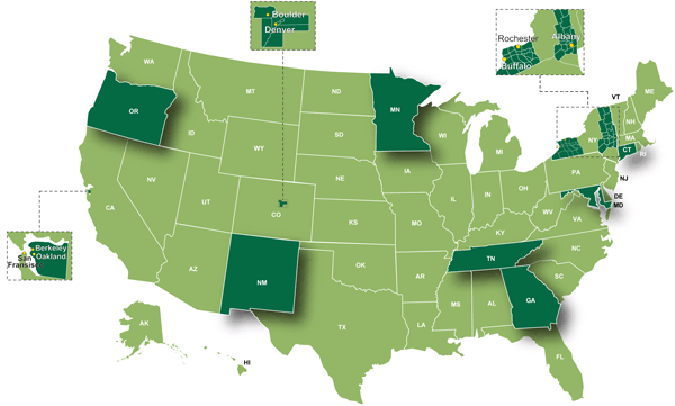About FoodNet

Objectives
- Determine the burden of foodborne illness in the United States
- Monitor trends in the burden of specific foodborne illness over time
- Attribute the burden of foodborne illness to specific foods and settings
- Disseminate information that can lead to improvements in public health practice and the development of interventions to reduce the burden of foodborne illness.
The Foodborne Diseases Active Surveillance Network (FoodNet) conducts surveillance for Campylobacter, Cryptosporidium, Cyclospora, Listeria, Salmonella, Shiga toxin-producing Escherichia coli (STEC) O157 and non-O157, Shigella, Vibrio, and Yersinia infections diagnosed by laboratory testing of samples from patients.
The network was established in July 1995 and is a collaborative program among CDC, 10 state health departments, the U.S. Department of Agriculture’s Food Safety and Inspection Service (USDA-FSIS), and the Food and Drug Administration (FDA). FoodNet personnel located at state health departments regularly contact the clinical laboratories in Connecticut, Georgia, Maryland, Minnesota, New Mexico, Oregon, Tennessee and selected counties in California, Colorado, and New York to get reports of infections diagnosed in residents of these areas. The surveillance area includes 15% of the United States population (48 million persons). FoodNet is the principal foodborne disease component of CDC’s Emerging Infections Program.
FoodNet accomplishes its work through active surveillance; surveys of laboratories, physicians, and the general population; and population-based epidemiologic studies.
Two decades of achievement
FoodNet’s major contributions include the establishment of reliable, active population-based surveillance of enteric diseases; development and implementation of epidemiologic studies to determine risk and protective factors for enteric infections; population surveys that describe the features of gastrointestinal illnesses, medical care-seeking behavior, and food eating patterns; laboratory surveys of current practices; and development of a surveillance and research platform that can be adapted to address emerging issues. FoodNet has matured and transformed over the last 20 years and continues to evolve.
Keep learning
- Page last reviewed: August 12, 2015
- Page last updated: March 17, 2016
- Content source:


 ShareCompartir
ShareCompartir
